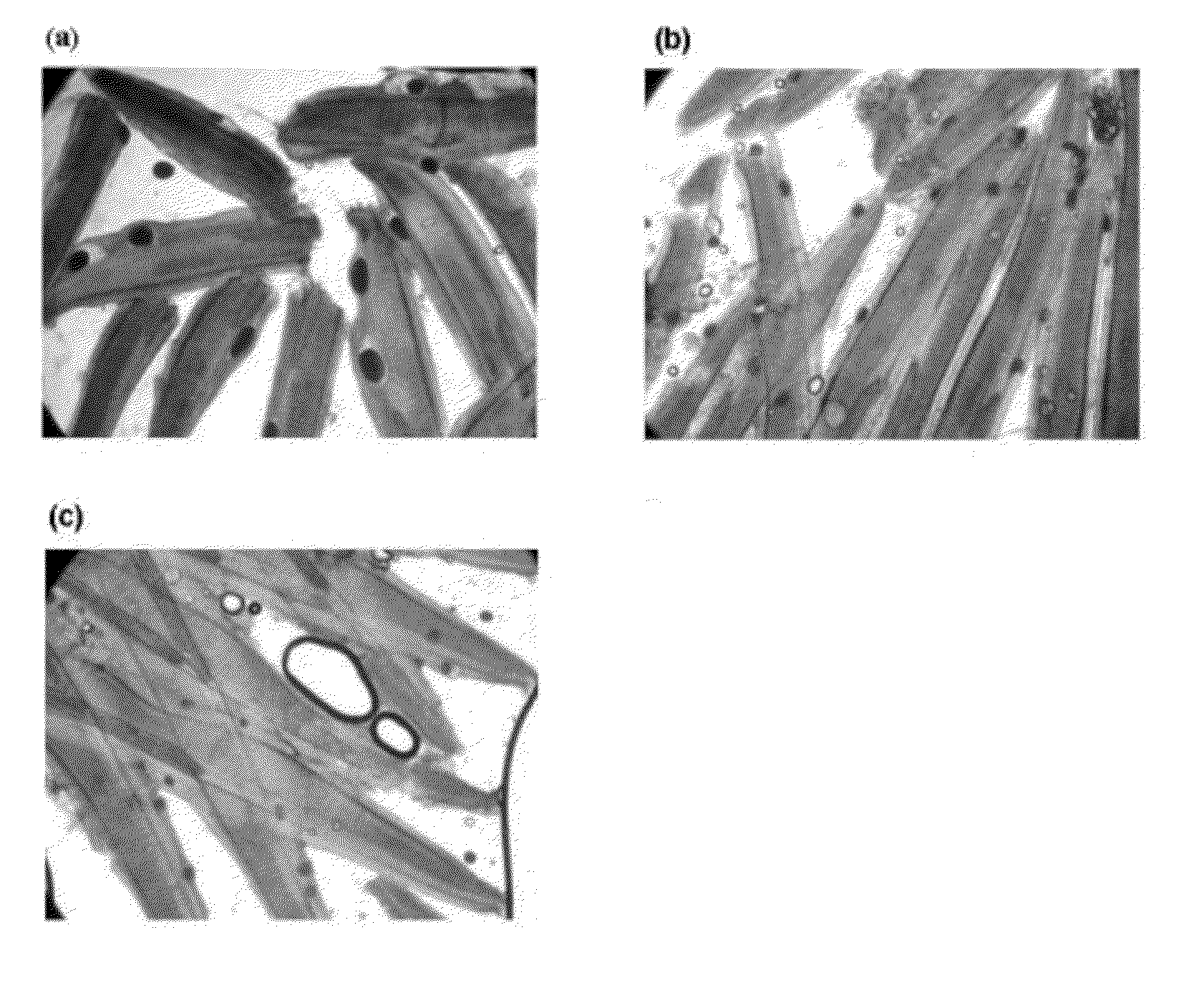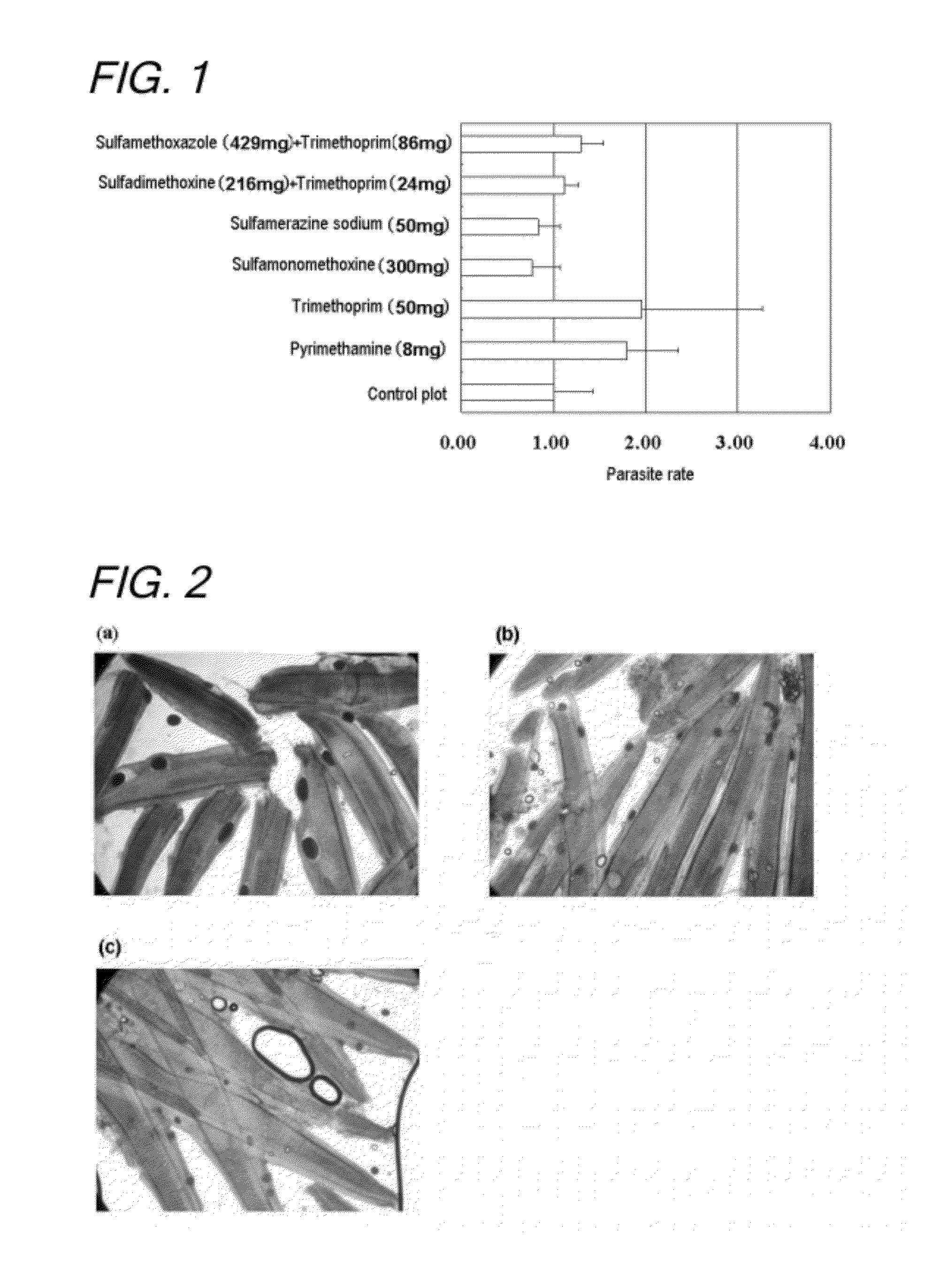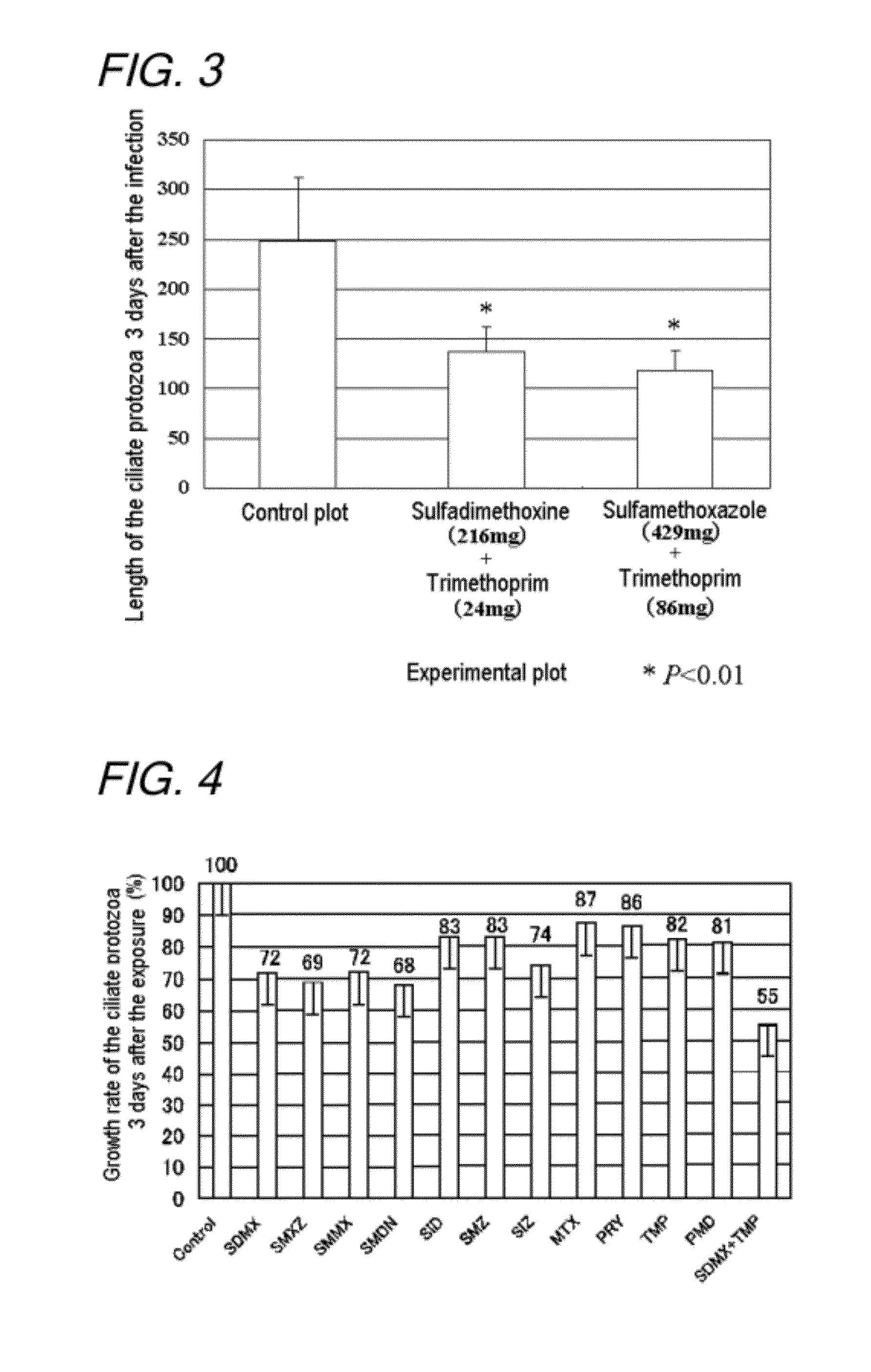Antiparasitic agent for fish and method of controlling proliferation of fish parasites
a technology of antiparasitic agent and fish, which is applied in the direction of antiparasitic agent, biocide, drug composition, etc., can solve the problems of reducing the effect of antiparasitic agent, reducing the burden on fish, and reducing the occurrence of drug-resistant strains in the culturing location
- Summary
- Abstract
- Description
- Claims
- Application Information
AI Technical Summary
Benefits of technology
Problems solved by technology
Method used
Image
Examples
example 1
[0073]Parasiticidal effect of the oral administration of an inhibitor of folate synthesis and an inhibitor of folate activation on the parasitism of Cryptocaryon irritans on Pagrus major (1)
[0074]Test method: Seventy Pagrus major with an average weight of 20 g were reared for approximately 7 days in a 200-liter aquarium and were acclimatized to a water temperature of 25° C. During that time, commercial feed (manufactured by Nippon Suisan Kaisha, Ltd.; early phase feed EP (expanded) pellets with a diameter of 2.5 mm) was given, and the feeding rate was 2 wt % of fish body weight daily. Seawater supply was set at 2.4 liters per minute. For the parasitic infection, the seawater supply to the 200-liter aquarium was stopped and approximately 200,000 Cryptocaryon irritans hatched larva were put into the aquarium, then the fish were exposed to the parasites for 1 hour. After exposure, ten fish each were moved into seven 100-liter aquariums. During the rearing period, 1.2 liters / min. of sea...
example 2
[0078]Parasiticidal effect of the oral administration of an inhibitor of folate synthesis and an inhibitor of folate activation on the parasitism of Cryptocaryon irritans on Pagrus major (2)
[0079]Test method: Twenty-four Pagrus major with an average weight of 39 g were reared for approximately 7 days in a 200-liter aquarium and were acclimatized to a water temperature of 25° C. During that time, commercial feed (manufactured by Nippon Suisan Kaisha, Ltd.; early phase feed EP (expanded) pellets with a diameter of 2.5 mm) was given, and the feeding rate was 2 wt % of fish body weight daily. Seawater supply was set at 2.4 liters per minute. For the parasitic infection, the seawater supply to the 200-liter aquarium was stopped and approximately 170,000 Cryptocaryon irritans hatched larva were put into the aquarium, then the fish were exposed to the parasites for 1 hour. After exposure, eight fish each were moved into three 100-liter aquariums. During the rearing period, 1.2 liters / min. ...
example 3
[0083]Parasiticidal effect of the oral administration of an inhibitor of folate synthesis and an inhibitor of folate activation on the parasitism of Cryptocaryon irritans on Pagrus major (3)
[0084]Test method: Fifty-six Pagrus major with an average weight of 91 g were reared for approximately 12 days in a 500-liter aquarium and were acclimatized to a water temperature of 25° C. During that time, commercial feed (manufactured by Nippon Suisan Kaisha, Ltd.; early phase feed EP (expanded) pellets with a diameter of 2.5 mm) was given, and the feeding rate was 2 wt % of fish body weight daily. Seawater supply was set at 2.4 liters per minute. For the parasitic infection, the seawater supply to the 500-liter aquarium was stopped and approximately 500,000 Cryptocaryon irritans hatched larva were put into the aquarium, then the fish were exposed to the parasites for 1 hour. After exposure, seven fish each were moved into eight 100-liter aquariums. During the rearing period, 1.4 liters / min. o...
PUM
| Property | Measurement | Unit |
|---|---|---|
| body weight | aaaaa | aaaaa |
| body weight | aaaaa | aaaaa |
| body weight | aaaaa | aaaaa |
Abstract
Description
Claims
Application Information
 Login to View More
Login to View More - R&D
- Intellectual Property
- Life Sciences
- Materials
- Tech Scout
- Unparalleled Data Quality
- Higher Quality Content
- 60% Fewer Hallucinations
Browse by: Latest US Patents, China's latest patents, Technical Efficacy Thesaurus, Application Domain, Technology Topic, Popular Technical Reports.
© 2025 PatSnap. All rights reserved.Legal|Privacy policy|Modern Slavery Act Transparency Statement|Sitemap|About US| Contact US: help@patsnap.com



